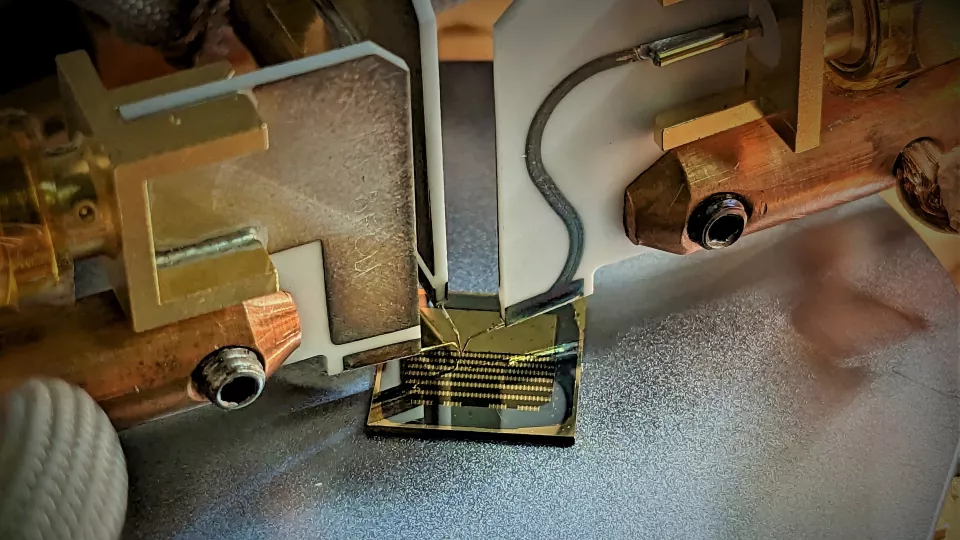Reconfigurable transistors important in future semiconductors
Reconfigurable transistors are key elements in the development of future semiconductors. As conventional transistors approach the limit of how small they can become, more functions in the same number of units will become increasingly important in developing small and energy-efficient circuits for better memories and more powerful computers.
– Publicerad den 7 June 2023

In two articles published in Science Advances and Nature Communications, NanoLundian Lars-Erik Wernersson together with Zhongyunshen Zhu and Anton Persson have shown both how to create new modifiable transistors and how to control them at a new level of detail.
What is remarkable about the new results is that they have succeeded in creating thin transitions with ferroelectric grains sitting right next to the transition. These nanograins can then be controlled at an individual level, rather than at the level of whole groups of grains, known as ensembles. In this way, individual parts of the material can be detected and controlled.
“Advanced applications require an understanding of the dynamics of individual grains down to the atomic level as well as defects. The increased understanding of the material can be used to optimize its functions. By controlling its ferroelectric grains, it is then possible to create new semiconductors where properties can be changed. By changing the electrical voltage, you can thus obtain different functions in the same component,” says Lars-Erik Wernersson, professor of nanoelectronics and also supervisor and co-author of the article.
Can become new memory cells
The researchers have also looked at how this knowledge can be used to create different reconfigurable applications by manipulating the signal passing through the transistor in different ways. This could, for example, be used for new memory cells or even more energy-efficient transistors.
This new type of transistor is called ferro-TFET and can be used in both digital and analogue circuits.
“The interesting thing is that it is possible to change the input signal in different ways, for example by changing the phase of the transistor, doubling the frequency, or mixing signals. Since the transistor remembers its properties even when the power is turned off, there is no need to re-set them every time the circuit is used,” says Zhongyunshen Zhu, PhD student in nanoelectronics and one of the authors of the article.
Cutting-edge research
Another advantage of these transistors is that they can operate at low voltage, making them energy efficient, which is needed for future wireless communication, the Internet of Things, and quantum computing.
“I consider this to be cutting-edge research of international caliber. The fact that we in Lund and Sweden are at the forefront of semiconductors is great, especially considering that the EU recently adopted the Chips Act, which aims to strengthen Europe's position in semiconductors,” says Lars-Erik Wernersson.
Research and industry hand in hand
- To finance the equipment for the new lab, an extensive funding program is underway. The largest contribution is planned from the Olle Engkvist Foundation, which intends to donate a total of SEK 100 million. Other major contributions come from the LMK Foundation, the Crafoord Foundation, Sparbanksstiftelsen Finn, and the Swedish Research Council through Myfab.
- Nanolab will be the third major materials science research infrastructure in Science Village, after MAX IV and ESS.
- The lab is open to industry and start-up companies.
- Striving to do pioneering science, NanoLund supports innovation and has proudly seen several spin-off companies evolving.
